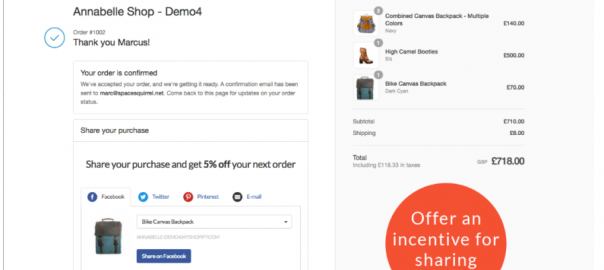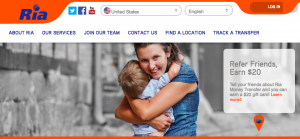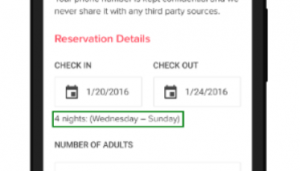Marketing is one of the most important aspects of any eCommerce business. In today’s market, the industry is extremely competitive and power lies in the hands of the consumer. They can easily compare prices, products, companies, and more. Therefore, in order to get in front of your audience, marketing is crucial.
The bottom line is if you aren’t marketing, then you aren’t acquiring new customers and will, unfortunately, die as an eCommerce business. Since I’m sure you don’t want that, here are 4 powerful marketing tactics you can be using to get customers back to your store or get new ones you haven’t reached before.
Social Media Shares Offer at Checkout
One of the most underutilized tactics in marketing is the ability to make your current customers salesmen for your company. If you can get your customers to help spread the word about your products, you’re winning the game.
One brilliant way that you can do this is to offer monetary discounts or other products for social media shares to your customers when they are checking out. Here is an example:

This works because consumers are generally more likely to buy products that are recommended to them. Think about it – don’t you trust a friend who tells you about a new product over the company telling you about it? Of course, you do. What better way to market to your target audience than by using their friends and family who are happy customers.
Getambaassador.com collected data and studies involving word of mouth marketing and found:
“43% of social media users report buying a product after sharing or favoriting it on Facebook, Twitter, or Pinterest. Over half of purchases inspired by social media sharing occur within 1 week of sharing or favoriting, and 80% of purchases resulting from social media shares occur within 3 weeks of sharing.”
Meaning that, if we can get our customers to share the products that they bought online to their friends, then we are more likely to get a purchase from their friends … fast.
Will all the purchasers be good marketers? Probably not. Some won’t have any influence on their target market or won’t have much of a reach. Those might not be very effective at reaching your target market. But the good outweighs the bad. You will find customers who do have reach and influence.
In our market today, you cannot discount branding and influential marketing. Also, keep in mind that just because it does not convert into a sale right away doesn’t mean it won’t result in a sale down the road. Exposure isn’t going to hurt your company.
Overall, offering discounts or products in exchange for social media shares is a great tactic to reach more of your target market from the customers you already have. Also, they are pretty easy to run. Depending on your platform, it might be as simple as installing a simple plugin to accomplish it.
Retargeting from Email Segments
Unless you only sell 10 products, you need to be segmenting your emails. If you aren’t doing so right now, you are way behind.
Don’t believe what you hear about email segmentation. It’s not hard if you are using the right provider. Now, if you are using a very basic email software, it probably is very hard, but it doesn’t have to be. If you use Magento or Shopify, Springbot is a great marketing automation tool to use, and it integrates with MailChimp.
If you have a custom cart solution or less prevalent provider, you can use MailChimp or other relevant email software providers. Bronto is one for larger retailers and online merchants, but it is very excellent for segmenting the emails from your customers/subscribers.
By segmenting your email list out, you can accomplish other advertising tactics besides just sending emails. You can create retargeting audiences and send them custom advertisements to, it is hoped, bring them to your store and convert.
For example, let’s say that we sell organic skin care, and we have an email segment of customers who have bought our organic face wash. Wouldn’t it make sense to retarget those customer’s advertisements? Or, maybe, we send them an email offering our organic shampoo and conditioner. They might not have thought about those products before and might convert.
If you can understand your audience, you can appeal to their wants. This is a great way to advertise to an audience that you know will buy from you.
Maybe we also have an email segment of customers who usually buy every 60 days. If they use our organic face wash, we know we should run retargeting ads around day 50-70 when they are ready to buy. Easy conversion.
These are two simple strategies, but there are thousands of different strategies to utilize with retargeting through email segments.
Content Marketing
Content marketing is easily the hottest customers acquisition channel right now in the eCommerce space. Why? Because it helps in the customer funnel to purchase:
Researching Intent -> Search Intent -> Buy Intent
During the researching phase, consumers are usually researching what product they should buy in order to meet their needs. Then, once they figure out what product they want to buy, they move into the searching phase to find the place they will buy it from. Finally, the buying phase is when a consumer is ready to buy the product from their preferred vendor.
Naturally, content marketing can help to boost conversions because it builds trust with customers who are searching and researching products. Because of our quality content that helps answer any questions they have, provide additional information, etc., they will trust us more and, we hope, will buy from us.
It is no coincidence that Kapost was able to find that content marketing was able to help boost conversion rates of websites. This is because content marketing helps build relationships and trust between the customer and the company selling the product.

There are tons of ways to do content marketing, and, in reality, it can be hard to start. You can Google and find thousands of articles that will tell you it’s as simple as “create better content.” That was easy, huh? Well, if you don’t know how to just “create better content,” here is my three-step process for super-easy content marketing:
- Identify Content Gaps
The first thing that you want to do is identify what you need to write about. A good strategy is to see what you rank for in SEMRush and identify rankings that fall in between pages 2-10, but which still get a good amount of search volume.
For example, let’s say you rank for “Does Organic Face Wash Help?” and your organic face wash product is what ranks. Obviously, that is a bad page to rank for that search term because it doesn’t answer the question. So, based off this, we could create a nice blog post highlighting that it does help!
Another thing you can do is use SEMRush or Ahrefs to figure out what your competitors rank for. By looking at their rankings, you can figure out their best blogs and what they rank for and see if you can use that information to identify any holes in your content.
Being that we are in eCommerce, we want to find queries that are questions, such as “does organic face wash help,” for which we can write content that will answer the searcher’s question. Just be mindful: It could be a short phrase but still be a question you could answer, such as “organic face wash work.”
- Answer with Content
Once you find questions in your search traffic, you want to produce content which will answer that question that is better than what is currently ranking #1-3 for the search phrase. Take the best things that those rankings did with their content, make it better with your own thoughts, and then combine it into one super piece. Make sure you have phenomenal writing and great imagery, and really blow it out of the water.
- Promote Your Content
Once you have your piece written, you want to promote it! You can use your email segments above and send it to your customers. After all, aren’t they going to be your biggest fans? You can also use your social media channels to promote the content. Once you do this, let’s hope people will find the article, enjoy it, link to it, and share it on their social media sites – and you will shoot up the rankings.
Optimizing Google & Bing Shopping
I hope you are already running Google and Bing Shopping. If not, you are missing out on a great customer acquisition strategy, and you need to start immediately. Once you have these up and running, you will find that it is very competitive and that optimizing your products is paramount.
One of the reasons Google Shopping does not work as well for merchants as they would like is because their products are very poor in terms of Google Shopping’s algorithm. You might think that it is some space-age algorithm, but, in reality, it’s quite simple. They place products based generally on these key criteria:
- Title
- Description
- Category
- Reviews
- Price
- And more
If we can optimize for those points, then we can be more successful in Google Shopping, show up for more queries in Google Shopping, and acquire more customers than ever before. I wrote a whole article on the finer details on how to optimize for Google Shopping here.
Conclusion
Don’t let potential customers – a.k.a. sales – pass you by. If you use these 4 easy but powerful marketing tactics, you should be able to get your site and products in front of more people than ever before.
Digital & Social Articles on Business 2 Community(87)
Report Post





